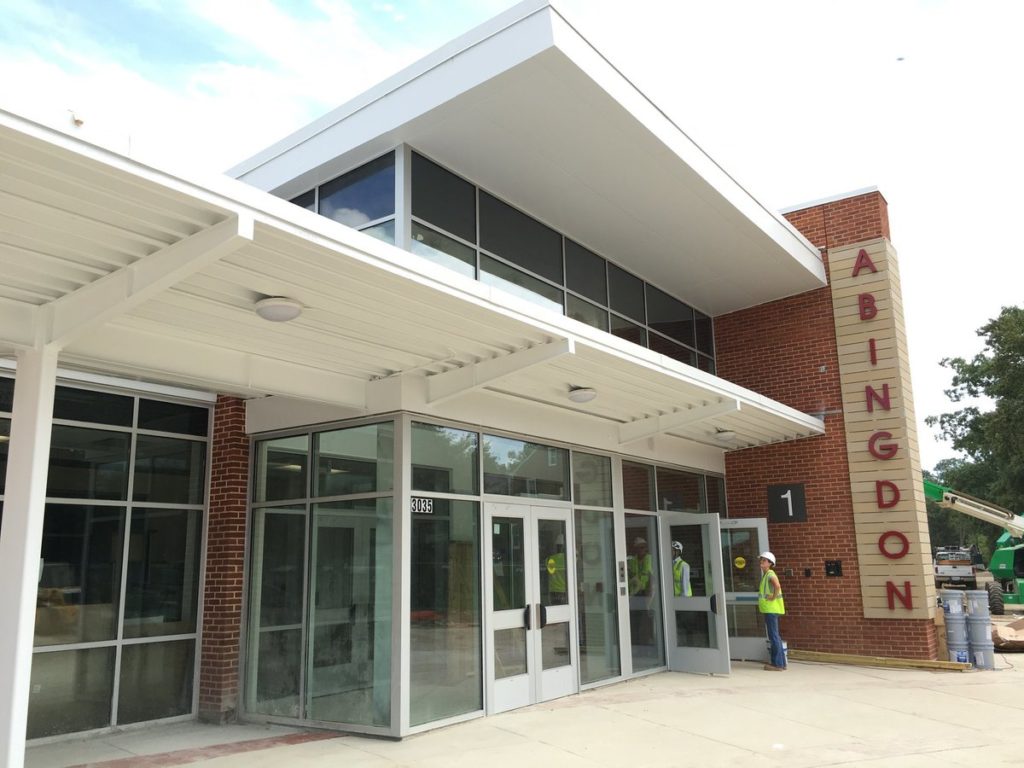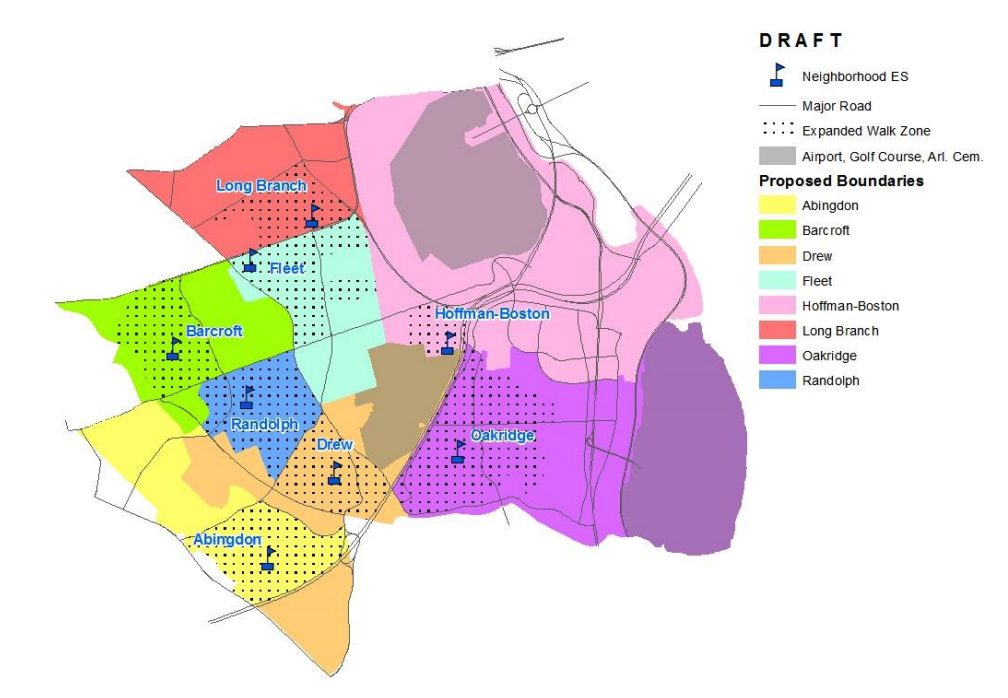Arlington school officials have hit a bit of a snag in the complex, contentious process of setting new boundaries for the county’s southern elementary schools — changes they’ve proposed to address concerns from Drew Model School parents have generated a new backlash from the Abingdon Elementary community.
Some parents living in the Nauck neighborhood initially raised concerns that proposed boundary tweaks at Drew would drastically change the school’s socioeconomic make-up, leading to a substantial boost in the number of students receiving “free and reduced lunch,” a measure of each family’s economic means, at the school. They feared such a shift would amount to packing poorer students into a single building, rather than maintaining a more balanced percentage at each South Arlington school.
Accordingly, Arlington Public Schools planners offered a change to the new boundary map, which is being crafted as the school system prepares to open Alice West Fleet Elementary School ahead of the 2019-2020 school year. The zoning change would send a few neighborhoods in the southernmost reaches of Fairlington, an area roughly bounded by N. Quaker Lane and King Street, to Drew instead of Abingdon in order to better balance out the “free and reduced lunch” population at each school.
However, that suggestion was immediately met with fierce criticism from the Fairlington community. A petition protesting the change launched on Friday (Oct. 12) has already garnered more than 1,000 signatures, and the Fairlington Citizens’ Association fired off a pointed letter to the School Board on Sunday (Oct. 14).
“Shifting South Fairlington students to another school will weaken the fabric of the community, diminish the cohesiveness of the community, and disrupt social and educational connections that currently exist,” Citizens’ Association President Guy Land wrote. “It runs counter to the community-centric focus Arlington has for years promoted.”
Beyond even that broad criticism, Land and the petition’s authors argue that the change would be an inefficient one from a transportation perspective, charging that it would increase the number of students forced to ride the bus to school instead of walk.
“Bus rides from Fairlington to Drew would significantly lengthen the ride for kids,” the petition reads. “This would put a greater strain on APS transportation, which is not a luxury APS has.”
Yet APS staff pointed out in a presentation to the Board last Wednesday (Oct. 10) that such a boundary change would have substantial benefits in balancing out the free and reduced lunch divide between Drew and Abingdon.
They noted that Abingdon had 41 percent of students living in its attendance boundary eligible for free and reduced lunch, as of last October. Meanwhile, Drew stands at 66 percent, a number that is a bit deceiving, as it reflects the move of the Montessori program to Patrick Henry Elementary next year, and the program generally includes kids from wealthier families. With Montessori students included, Drew’s free and reduced lunch percentage is closer to 52 percent.
The first boundary proposal would’ve dropped Abingdon’s free and reduced lunch percentage down to 34 percent, while moving Drew to 60 percent. The newly revised proposal would bump Abingdon up to 45 percent, compared to 49 percent for Drew. And, in a bid to ease some worries over the boundary change, APS could allow rising fifth grade students and their siblings to be exempt from the switch, with APS transportation provided.
The newest boundary map would also address the concerns of parents at Drew that students could be zoned to matriculate to one of three middle schools, instead of just one, under the first APS proposal. The new map would have Drew students eligible for two middle schools instead.
Parents and community members now have until Oct. 29 to offer comments on the latest boundary proposal. APS plans to release a final map on Nov. 5, with the School Board expected to take a final vote on the matter on Dec. 6.




